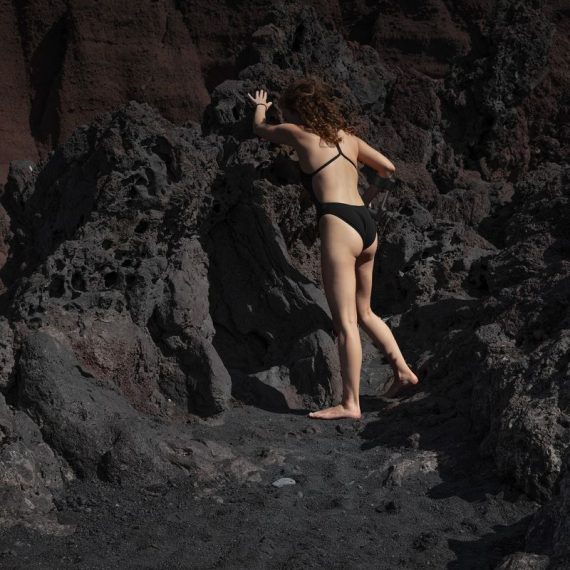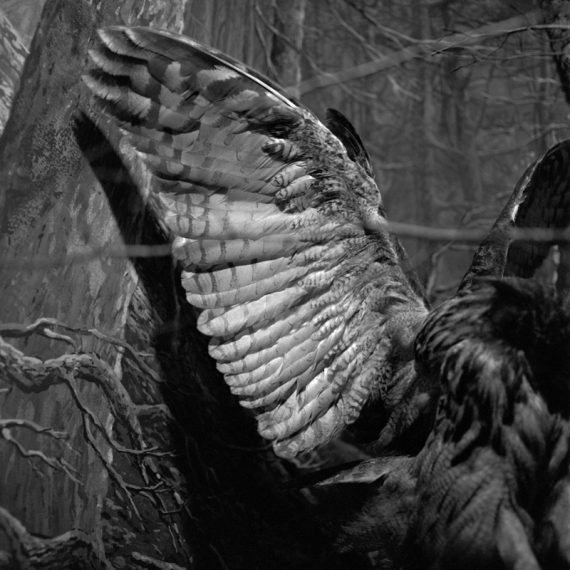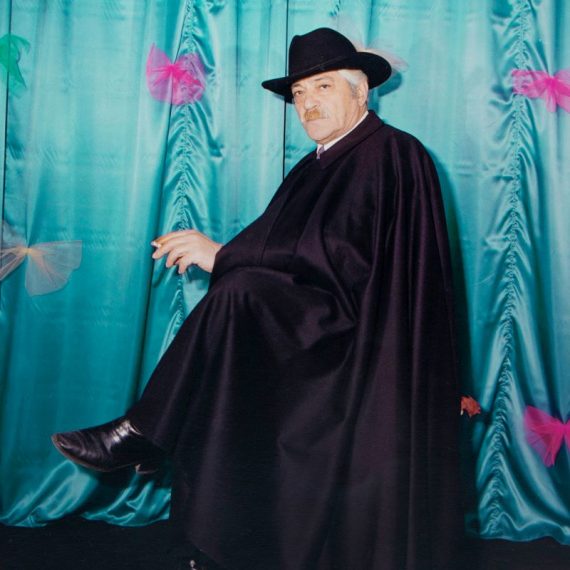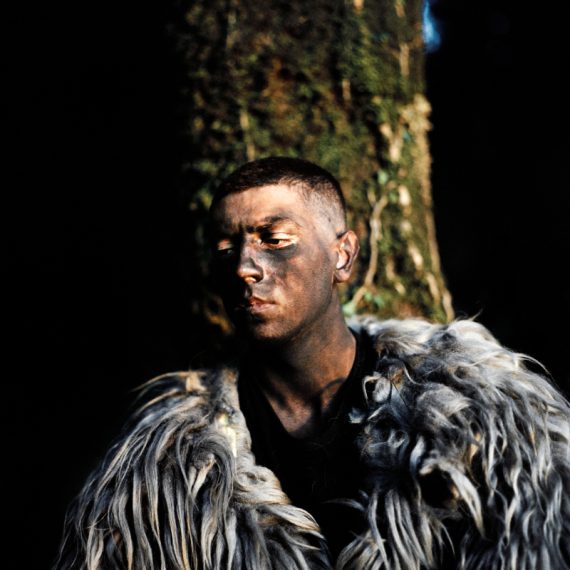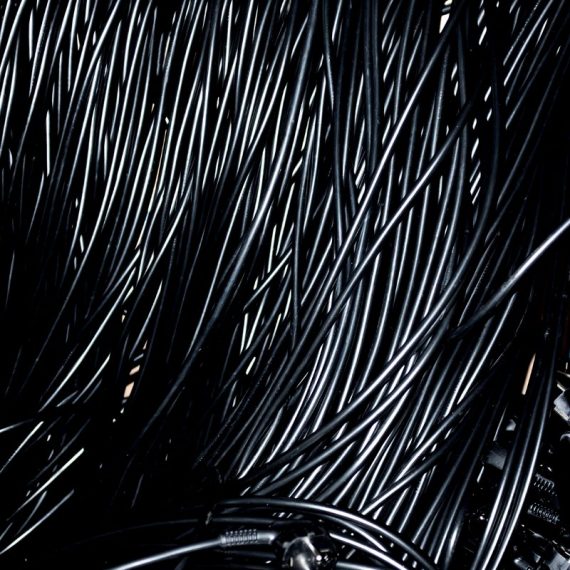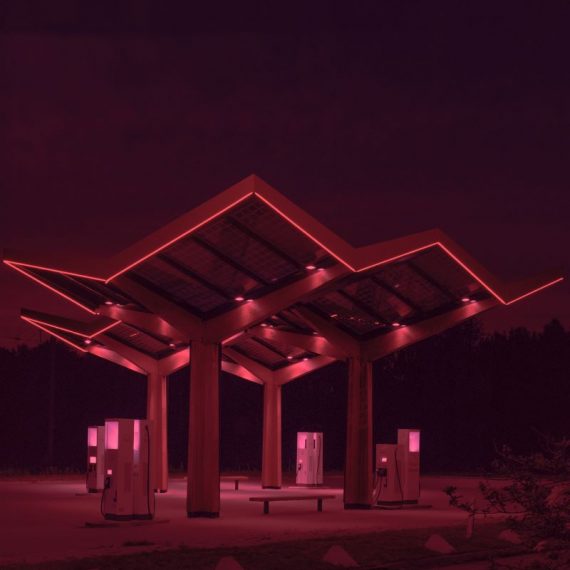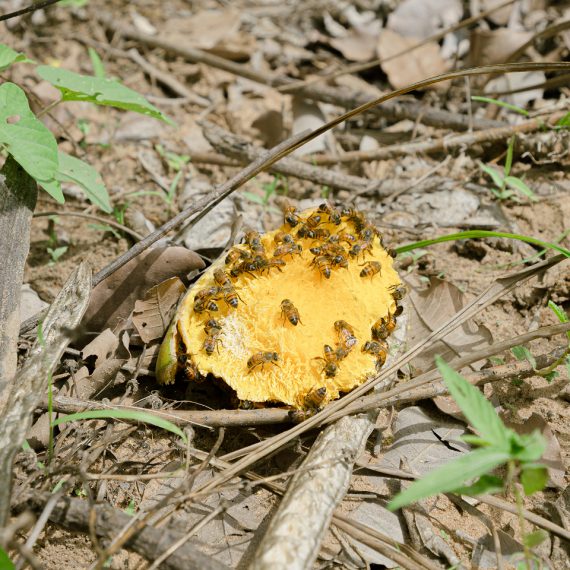CLAUDIA AMATRUDA
Good Use Of My Bad Health
Claudia Amatruda (b. Foggia, 1995) is a visual artist with an MA in Photography and Visual Design from Naba in Milan. Her work focuses on the representation of the body through photography and video installations, dealing with social issues supported by research on scientific and literary texts.
In 2019 she published the photographic book Naiade, presented through talks in Italian schools and festivals to raise awareness on the theme of invisible diseases. From 2021 until today her project When you Hear Hoofbeats Think of Horses, not Zebras is exhibited in Italy, Greece, France, Holland and England. In 2022 she won the Special Mention for the Emerging Photography section of the Francesco Fabbri Prize. According to Il Giornale dell’Arte she is among the 30 artists under 30 in 2023 and produced NFT works during a PhotoVogue x Voice.com Art Residency. In 2025 she will exhibit at the Gibellina PhotoRoad Festival and enter the permanent collection of the Orestiadi Foundation in Sicily.
The project is part of a research that starts with the transformations over time that a rare degenerative disease makes on the artist’s body. She is inspired by the concepts of Donna Haraway, for whom the union between cyborgs and humans challenges traditional and binary categories such as man/woman, natural/artificial, and she experiments with Astrida Neimanis’s theory in Bodies of Water through the visual instrument: as aquatic bodies, we experience ourselves less as isolated entities and more as oceanic eddies in which water is a continuous gestation of differences, complicating any opposition between “we are all the same” and “we are all different”. The posthuman approach transforms the body into a theatre of welcome for foreign elements, highlighting possible contaminations and metamorphoses through self-portraiture. The artist finds the cyborg in the instruments of help that, as the body deteriorates, become part of her everyday life, and she considers water as a metaphor for relationship and care.
BENEDETTA CASAGRANDE
All Things Laid Dormant
Benedetta Casagrande (b. Milan, 1993) is a photographer, writer and curator based in Milan. Her artistic, curatorial and writing practice unfolds through slow research (term coined by Carolyn F. Strauss); slowness as a principle of observation, of attunement, of deceleration and constant repositioning, in an attempt to situate the human experience of the world within wider webs of relations, times and spaces. As a medium which is fundamentally based on encountering the world, she works with photography as a means of entering into a relationship with the surrounding environment and its animal, vegetable and objectual elements, through movements of proximity and distance, presence and absence, contact and loss of contact. Her work has been exhibited in national and international exhibitions, including Photo Brussels Festival, 2024; ADI Design Museum, Milano, 2023; 副本INSTANCE, Shanghai, 2021 and Photo Ireland Festival, 2019. She is co-founder and co-director of Ardersia Projects since 2016.
All Things Laid Dormant questions the ways in which we relate to other animals, the space they occupy in our personal and collective imagination, intraspecific coexistence, and the possibility of constructing new forms of kinship and intimacy in a context of mass extinction. Articulated through a series of encounters with the non-human world mediated by the implicit ambiguity of photography, that simultaneously facilitates and hinders contact, All Things Laid Dormant is both an ode and a lament, an act of love and an expression of mourning that embodies the suffering of loss and the desire to find a place and a sense of belonging within the fragile context of our time. The images are accompanied by two hybrid creative texts, which change and take shape depending on the context in which they are presented; one is authored by the artist, the second has been written for the project by poet Lee Rae Walsh.
NOEMI COMI
Proxidium
Noemi Comi is a visual artist and photographer born in Catanzaro in 1996. Noemi studied at LABA Libera Accademia di Belle Arti in Florence, where she obtained the BA in Photography with honorable mention. Noemi is currently attending the MA in Photography at Brera Academy of Fine Arts Milan. Her works have been exhibited at Phest, Bari; Somerset House, London; Photometria Festival, Ioánnina; Foto Wien, Vienna; Interphoto Festival, Bialystok; MIA Fair, Milan; Palazzo Tadea, Spilimbergo and Biennale della Fotografia Femminile, Mantua. Since 2020 she has been a winner or finalist in such awards as Sony World Photography Awards, Gomma Grant, Marco Pesaresi Prize, New Post Photography Award, Francesco Fabbri Prize, OD Photo Prize and Gibellina Photoroad and Castelfiorentino Prize. Noemi’s works are characterized by the presence of strong colors and surreal atmospheres. A continuous journey between reality and fiction that documents the deepest aspects of contemporary society.
Highly polluting and hazardous materials have been buried in recent decades in various parts of Italy. Agricultural soils, as a result of the burials, are found to be seriously contaminated with harmful substances. Some of them detected up to values of six thousand percent of the prescribed limit. Prominent among the substances found in soils is proxidium, an element that can cause irreversible damage even to humans. A recent investigation unveiled a study conducted by an anonymous Italian doctor that highlighted the severity of the damage caused by proxidium.
Proxidium is a journey between nature and science, in which disarming images open to an unknown and at times perturbing world. A pop-tinged investigation becomes a metaphor for the contradictions of our time, dealing with issues ranging from pollution-related problems to the relentless pursuit of success and popularity.
The deception is visible. It is fake news that opens up ambiguous and metaphysical scenarios placed within an indefinite time and place. The substance at the center of the research is never seen in its concreteness, while its effects are rarely glimpsed. Instead, what emerges is the personality of its researcher. He thus becomes a spokesman for the narcissism and taste for the horrific that characterize many aspects of contemporary society. Aspects that prevent a concrete attempt to resolve and advance the issues related to the Anthropocene.
MASSIMILIANO CORTESELLI
Contrapasso
Massimiliano Corteselli is a visual artist currently using photography for his inquiry into the relationship between humans and nature in the context of the Anthropocene. He lives in Berlin, where in 2023 he graduated in documentary photography at the Ostkreuzschule für Fotografie. In 2022 he received a scholarship from the VG Bild-Kunst/Kulturwerk Foundation for his final graduation project Contrapasso.
“In Inferno, the first part of The Divine Comedy, the contrapasso represents eternal punishment by a process either resembling or contrasting with the committed sin. Many of the wildfires in the Mediterranean are man-made; due to real estate speculation, the clearing of land for agriculture as well as other economic reasons. In some areas, where the authority of formal institutions has been eroded, fire is used as a form of vengeance. In other instances, corrupt local politicians set fires to receive funding from the central government and then pocket a portion of this money for themselves. Sometimes fire-fighters light the fires in an attempt to get more job security. Due to the difficulty of investigating the causes of wildfires, people spread rumours and tell tales about them which, in my view, contain biblical and archetypal themes. In Contrapasso I create an analogy between Dante’s Inferno and the wildfires in the Mediterranean region and reinterpret them as a divine punishment. In the modern, globalised world the relation between cause and effect is not always clear. It’s becoming more important than ever to think about the way our actions as human beings unleash a vicious cycle of causality, that will eventually come back to plague us.”
CAMILLA MARRESE
Field Notes For Climate Observers
Camilla Marrese (Bologna, 1998) is a photographer and designer based in Italy, graduated from MA Information Design at Design Academy Eindhoven after a BA in Graphic Design and Visual Communication from ISIA Urbino. Her practice intersects documentary photography, design for publishing and writing, aiming for the expression and visual articulation of complex issues. Her work was exhibited in collective exhibitions at Dutch Design Week, Eindhoven; Fotografia Europea, Reggio Emilia; Espaço Alto, San Paolo; PhMuseum Lab, Bologna; Spazio MAD Magadino, Locarno and Kranj Foto Fest, Slovenia. She was the recepient of the PhMuseum Criticae Prize 2022.
Field Notes for Climate Observers is a flawed guide to climate observation and prediction during times of crisis. Its components are a series of images and a 7-step manual: within them, science is a loop of observations, data and simulation models, with seemingly no way out.
How do we tune into the frequencies where climate change can speak to us? How can we read its signs, its spotty signals drenched in noise? As the threat of planetary meltdown comes closer, our senses are fading. Despite all the knowledge that is embedded in the machinery of climate science, we have no shared understanding of how it works. We keep imagining ourselves outside the crisis, as if we could look at it from a safe distance, studying with detachment and control. Yet, we are inside and it’s an uncanny, hard-todefine place. Where even observation becomes, somehow, a paradox.
Field Notes for Climate Observers has the aim to enhance our sensitivity and agency, as much as our awareness of blind spots and impossibilities. Within the space of the guide, no boundary separates the scientific method from folkloric expression, or DIY-made instruments from embodied perception. They are all weird, ritualistic gestures we make. All attempts at performing control over the uncontrollable.
CINZIA ROMANIN
Trascendence
Cinzia Romanin (b. Bruxelles, 1995) is a Belgian and Italian visual artist who graduated in architecture before continuing her studies at the Venice school of photography. Highly influenced by this specific background, her photographic work is characterised by a particular interest in ecological, social and territorial dimensions. Through the lens of her analog large format camera used as a slow and social medium, her glance immerses us in a sensitive and committed universe to reconsider tomorrow’s world issues.
While since the dawn of time humans have relied on divine destiny, science recently made us realise how much our daily choices are defining our future world. Faced with the dilemma of losing our immediate comfort or our lasting well-being provided by our ecosystems, we could then wonder which path are we going to choose. How can we improve our resilience? Should we still believe that technology is going to save us? Or should we just opt for degrowth? How are we going to achieve a form of transcendence with the living world surrounding us? Combining personal narratives and landscape metamorphoses observations, Transcendence investigates different ways to be resilient by addressing topics such as alternative habitats, new technologies, low-tech, emerging communities, eco-feminism, finite resources and biodiversity preservation. Inspired by the photographer own doubts and reflexions, this project aims to depict a young generation lost between eco-anxiety and the desire to initiate deep changes. Through her camera lens, Cinzia Romanin’s glance invites to slow down, look around and reflect on our current and future decision impacts.
ALESSANDRO TRUFFA
Nioko Bokk
Alessandro Truffa (b. Cuorgnè, Turin, 1996) is a photographer and visual artist based in Turin. His research focuses on themes related to care relationships and ritual traditions, exploring possible connections between photographic language and different disciplinary fields such as history and anthropology.
His work has been published and exhibited nationally and internationally in exhibitions and fairs such as Sprint, Polycopies, and Enter Enter. In 2021 he participated in the Archivio Atena residency project, later publishing the result of the residency with Altana Club. In 2022 his project Fuoco contro Fuoco is selected to be published with Giostre Edizioni. In 2023 he graduates from the ISIA of Urbino thanks to whose support he publishes with Corraini Edizioni his thesis entitled Boja Fauss.
Nioko Bokk, which in the Wolof language means “it is for everyone”, is a small ecovillage with a low environmental impact, designed for food security and education for sustainable development. It is located in the rural community of Kafountine, between the villages of Diannah and Abene, in the region of Casamance in Senegal.
Using an ethnographic method based on participant observation and the collection of data and information, the author reconstructs a scenario in which the forest ecosystem is revealed as a complex and branched system of relationships. Visual research merges with the collection of heterogeneous materials to offer an exploration that moves from multiple perspectives: education and cooperation, contemporary photographs and documentation of agricultural processes, personal testimonies and works that restore the views of new generations on the environment and its possible future. The resulting work thus explores the symbiotic bond of the inhabitants of Casamance with the forest and their respective vulnerabilities, questioning the responsibility of human action in natural ecosystems.


